The gable roof is a timeless architectural feature that seamlessly blends functionality with aesthetic appeal, making it a favorite for both modern and classic homes. Whether you're drawn to the clean lines of contemporary design or the charm of traditional symmetry, gable roofs offer endless possibilities to elevate your home's exterior. From rustic A-frame structures to sleek minimalist designs, the versatility of gable roofs allows homeowners to experiment with styles, materials, and innovative elements like glass panels, skylights, or green roofing. If you're looking to transform your home's silhouette or simply seeking inspiration, these 20 gable roof design ideas will spark your creativity and help you reimagine your space. Let’s dive into the world of gable roofs and discover how they can redefine your home’s character.
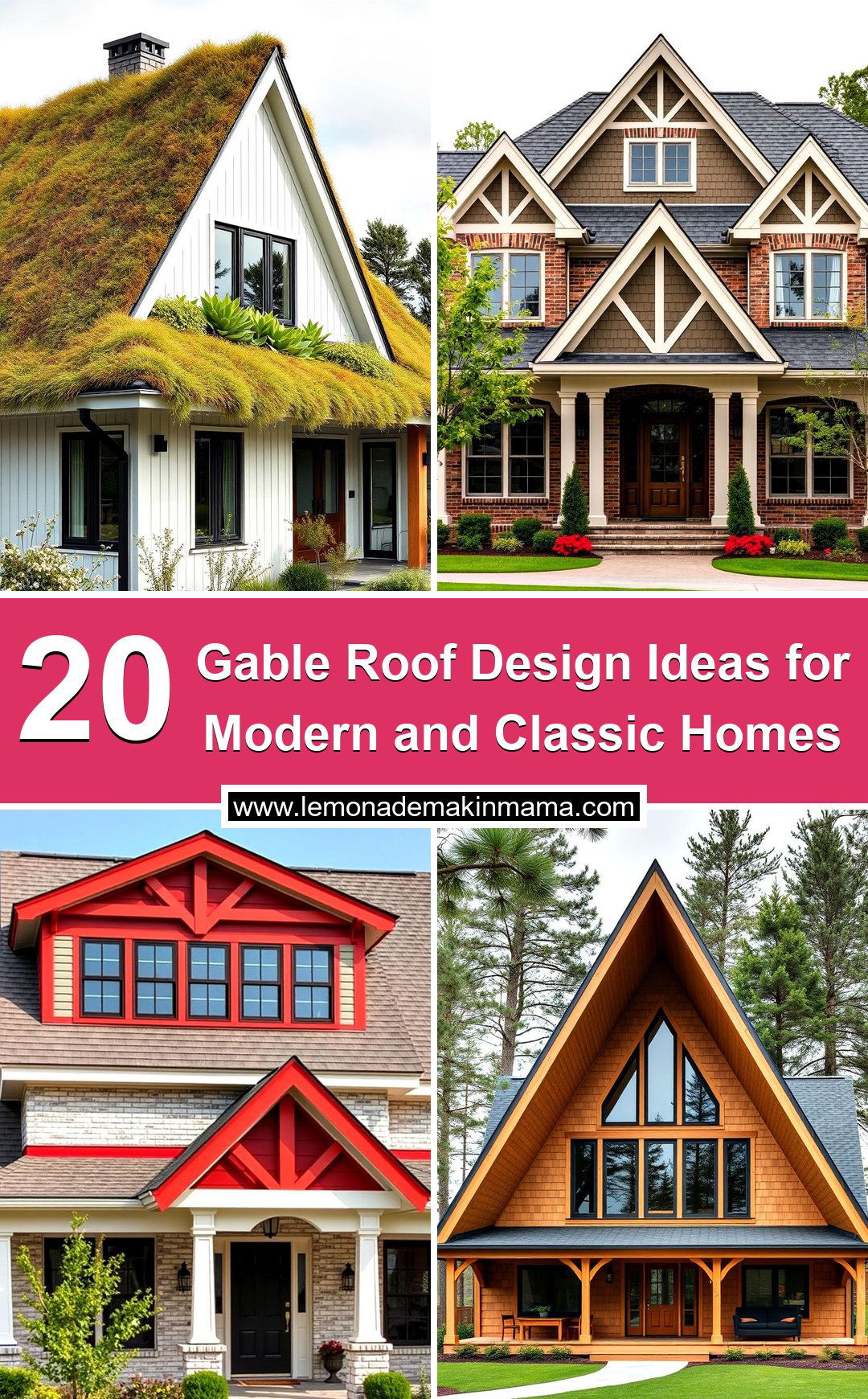
1. Traditional Symmetry with Gable Roofs
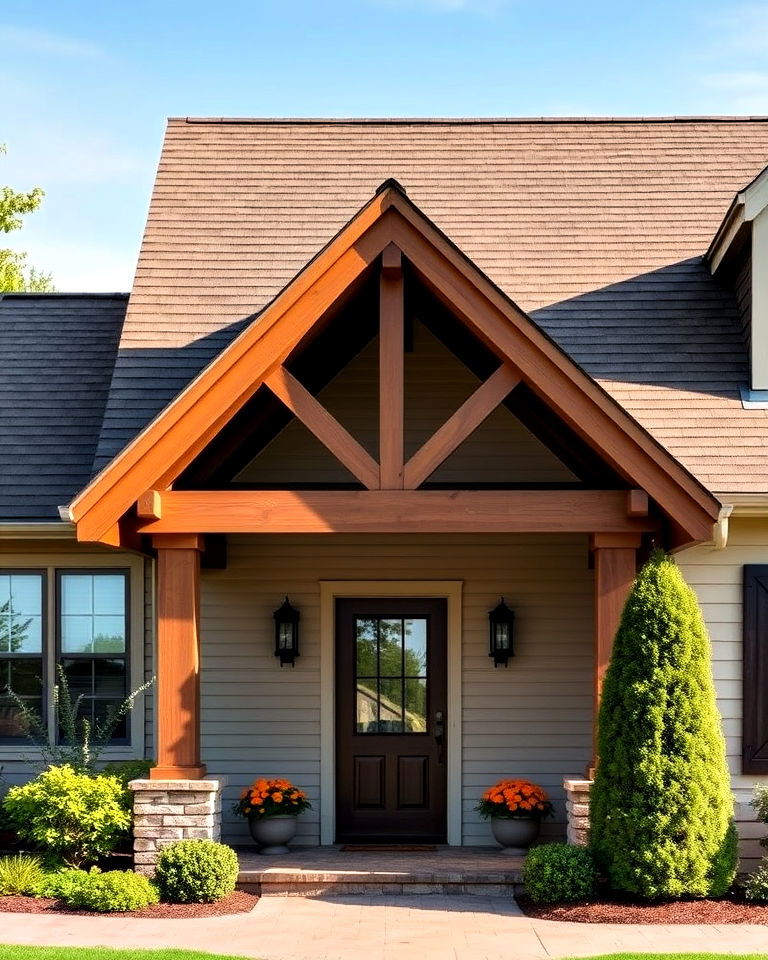
The classic gable roof design stands out with its timeless symmetry and clean lines, making it a perfect choice for traditional homes. Its triangular shape efficiently sheds water and snow, offering durability and practicality. By opting for this design, homeowners can enjoy an aesthetically pleasing exterior while maintaining structural simplicity. Pairing the gable with neutral tones or rustic materials like wood enhances its traditional appeal, blending seamlessly into various landscapes, from suburban neighborhoods to countryside settings.
2. Contemporary Gable with Glass Panels
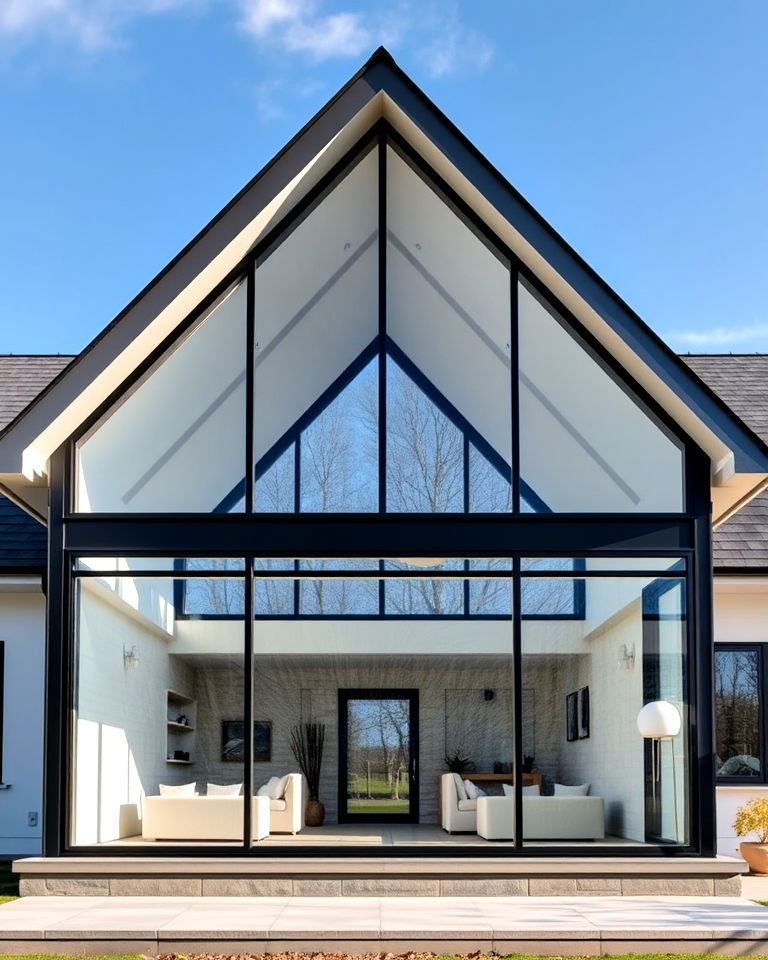
A gable roof integrated with expansive glass panels creates a stunning modern aesthetic. This design allows natural light to flood interior spaces, promoting energy efficiency and creating a bright, airy ambiance. The sharp rooflines juxtaposed with the sleek transparency of glass make it ideal for minimalist or modern homes. Additionally, this design enhances views of outdoor landscapes, making it perfect for homes in scenic areas. Using metal frames adds durability and complements the contemporary look.
3. Cross-Gable Roof for Depth and Interest
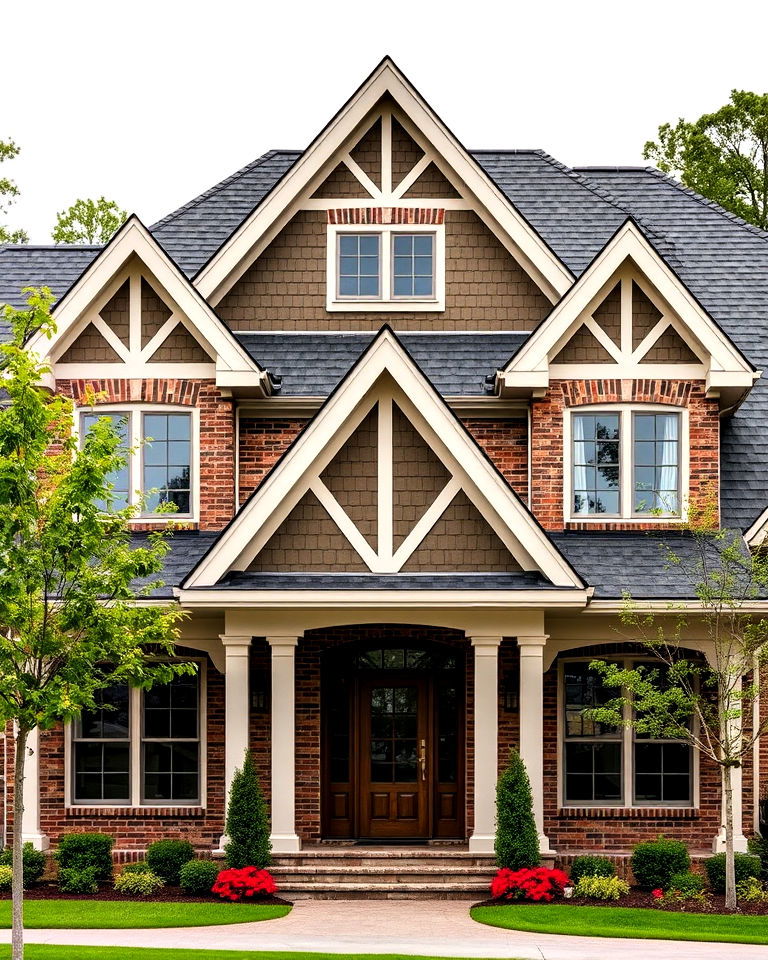
Cross-gable roofs add visual complexity and architectural charm to any home. This design features multiple gable sections intersecting at right angles, creating varied rooflines and deeper interior spaces. Perfect for larger homes, cross-gables can highlight different sections, such as entryways or porches. This style also accommodates different ceiling heights and adds a sense of grandeur. Whether accented with dormer windows or contrasting roof materials, it provides versatility in both function and design.
4. Gable Roof with Dormers
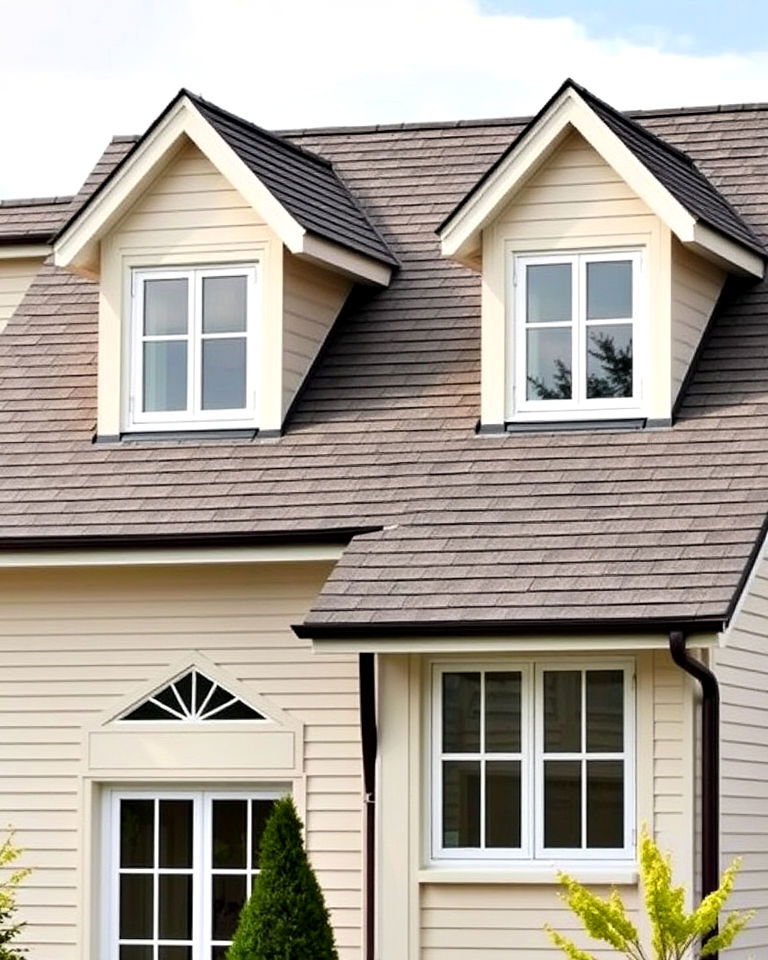
A gable roof with dormers elevates the charm and functionality of a home by adding additional living space and natural light. Dormers are small roofed structures that extend from the main roof, often used for attic conversions or lofts. This design works well with both traditional and modern architecture, offering flexibility in style. Whether you opt for symmetrical dormers or varied shapes, they add character and enhance curb appeal while increasing usable interior space.
5. A-Frame Gable Roof for Rustic Appeal
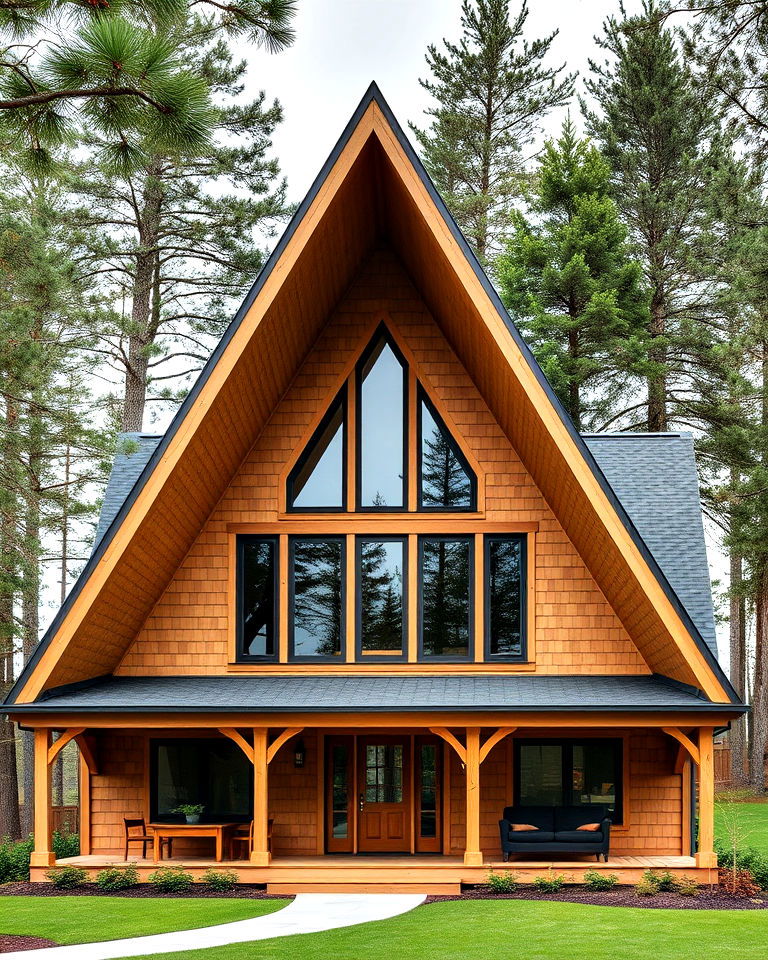
The A-frame gable roof boasts a striking triangular shape that extends to the ground, creating a cozy, cabin-like aesthetic. This design is perfect for small homes, cottages, or vacation retreats, as it maximizes space efficiency while offering strong protection against harsh weather. Its steep slopes make it ideal for snowy regions, as snow slides off easily. Incorporating natural wood or earthy tones enhances its rustic charm, blending it harmoniously with forest or mountain settings.
6. Gable Roof with Overhangs
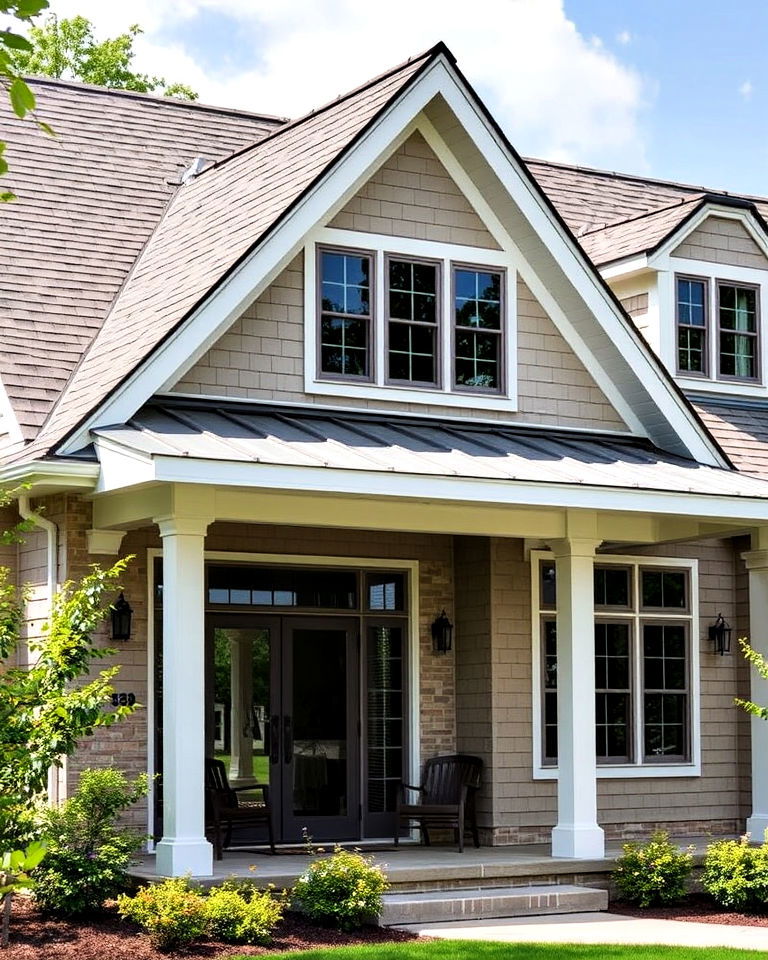
Adding extended overhangs to a gable roof improves both function and aesthetics. Overhangs provide extra protection against rain and sun, keeping walls and windows shielded from weather damage. This feature is particularly useful in regions with heavy rainfall or intense sunlight. Overhangs can also create shaded areas, ideal for patios or outdoor seating spaces. Paired with materials like shingles or tiles, this design enhances the overall appearance of the roof, creating a polished and practical look.
7. Gable Roof with a Mansard Twist
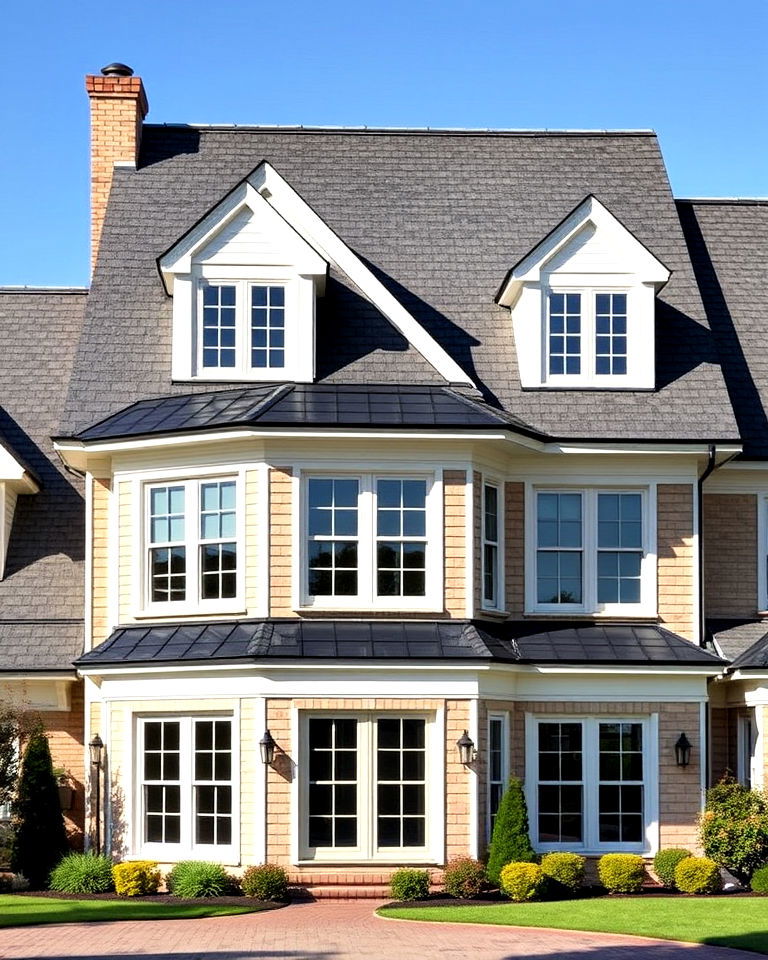
Combining a gable roof with a mansard lower section introduces a sophisticated architectural fusion. This hybrid style provides extra attic space or living areas under the roof, thanks to the steep mansard slopes. It’s an excellent choice for those wanting a mix of traditional gable aesthetics and the functionality of a mansard roof. Adding dormer windows to the mansard section can further increase usability and bring in natural light, making the design both stylish and practical.
8. Minimalist Flat-Gable Roof
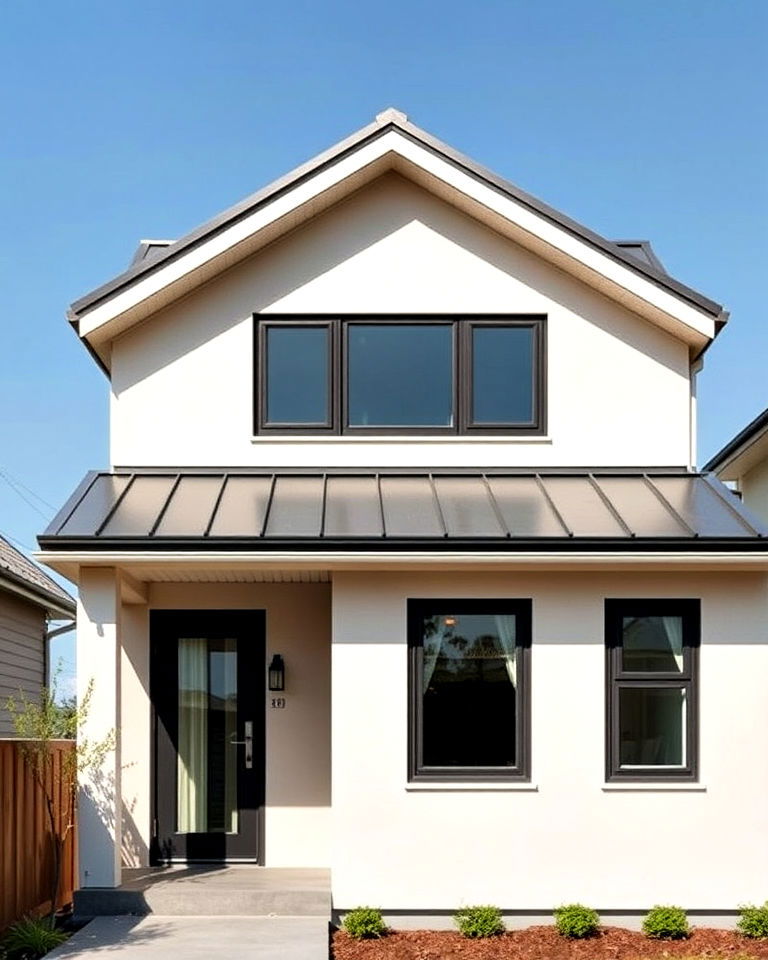
A minimalist flat-gable roof offers a sleek and understated appearance, perfect for modern or industrial-style homes. This design features a slight slope rather than a steep peak, blending simplicity with functionality. The flat-gable style complements clean, geometric lines and neutral color palettes, aligning seamlessly with contemporary aesthetics. It’s ideal for urban homes or compact spaces, where efficiency and style are paramount. Pairing it with metal roofing materials enhances its durability and modern vibe.
9. Gable Roof with Mixed Materials
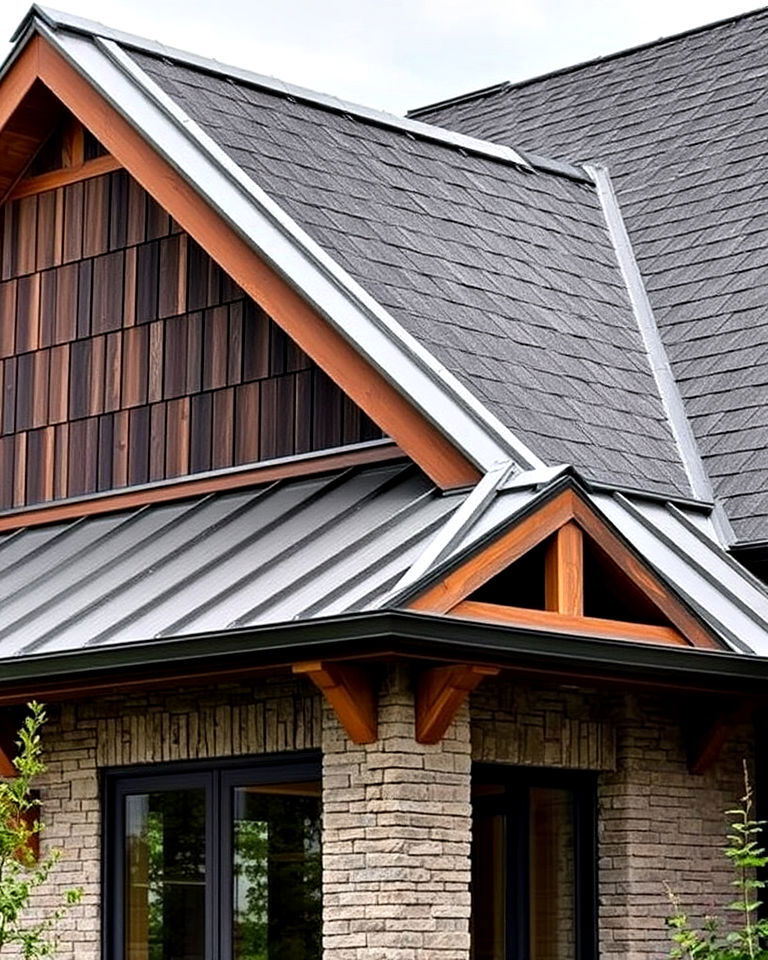
A gable roof incorporating mixed materials, such as metal and wood, creates a striking contrast and adds textural interest. This design balances rustic warmth with modern durability, making it a versatile choice for diverse architectural styles. Using wood for overhangs or trims paired with a metal or shingle roof adds depth and dimension. Additionally, the combination of materials can enhance sustainability by utilizing energy-efficient options, ensuring both style and eco-friendliness.
10. Dutch Gable Roof for European Elegance
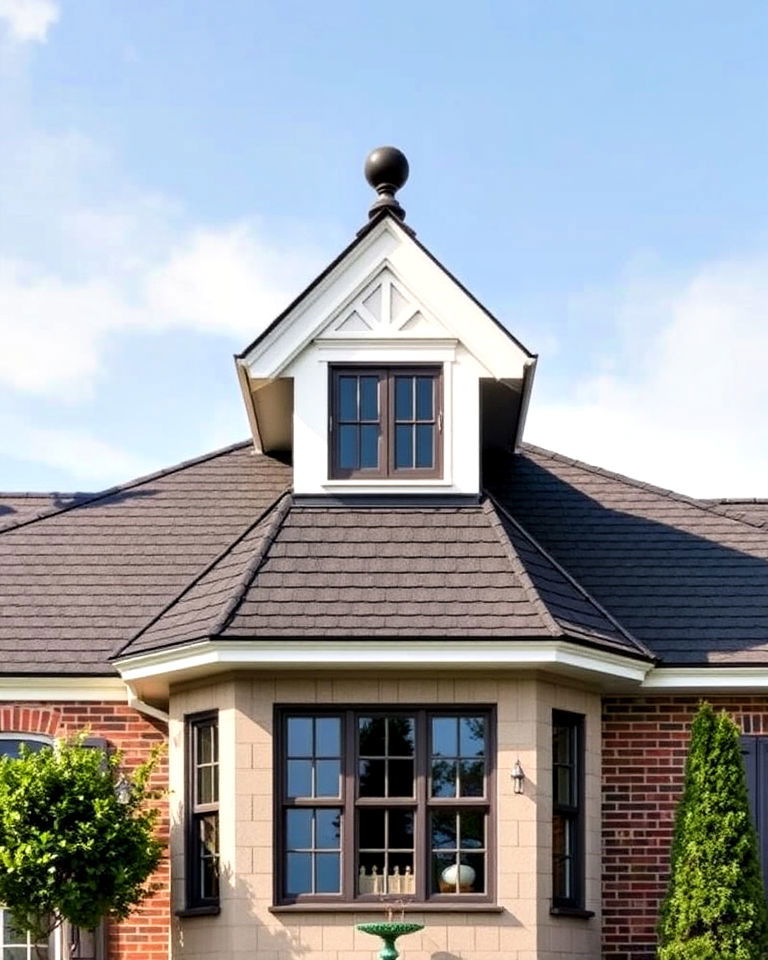
The Dutch gable roof combines a traditional gable with a hip roof for a distinctive European-inspired design. This style features a small gable set atop a hip roof, offering extra attic space or aesthetic flair. Its layered structure adds elegance and a sense of height, making it a great choice for upscale homes or historical restorations. To amplify its charm, consider decorative elements like finials or contrasting roof colors that highlight its unique form.
11. Stepped Gable Roof for a Modern Edge
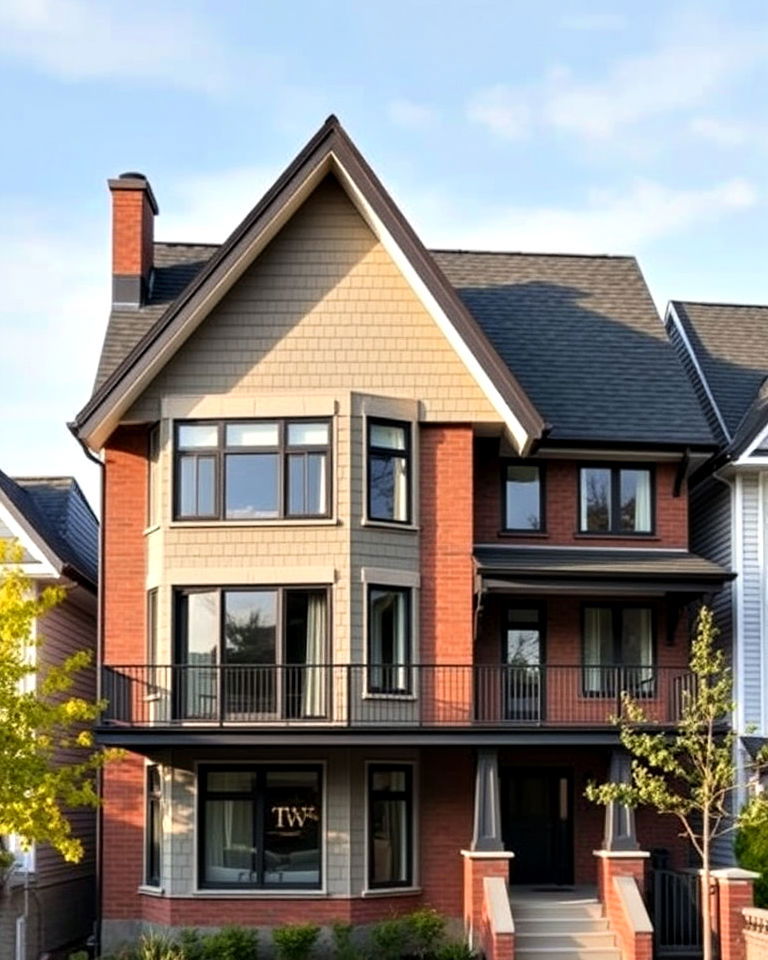
Stepped gable roofs break away from traditional symmetry, featuring offset sections for a contemporary twist. This dynamic design adds visual intrigue, making it a statement piece for modern architecture. The stepped style works especially well on multi-story homes, providing varied roof heights that can highlight specific architectural features. Using contrasting materials or bold colors accentuates the stepped effect, creating a striking and innovative look that stands out in urban settings.
12. Scandinavian Gable with Green Roofing
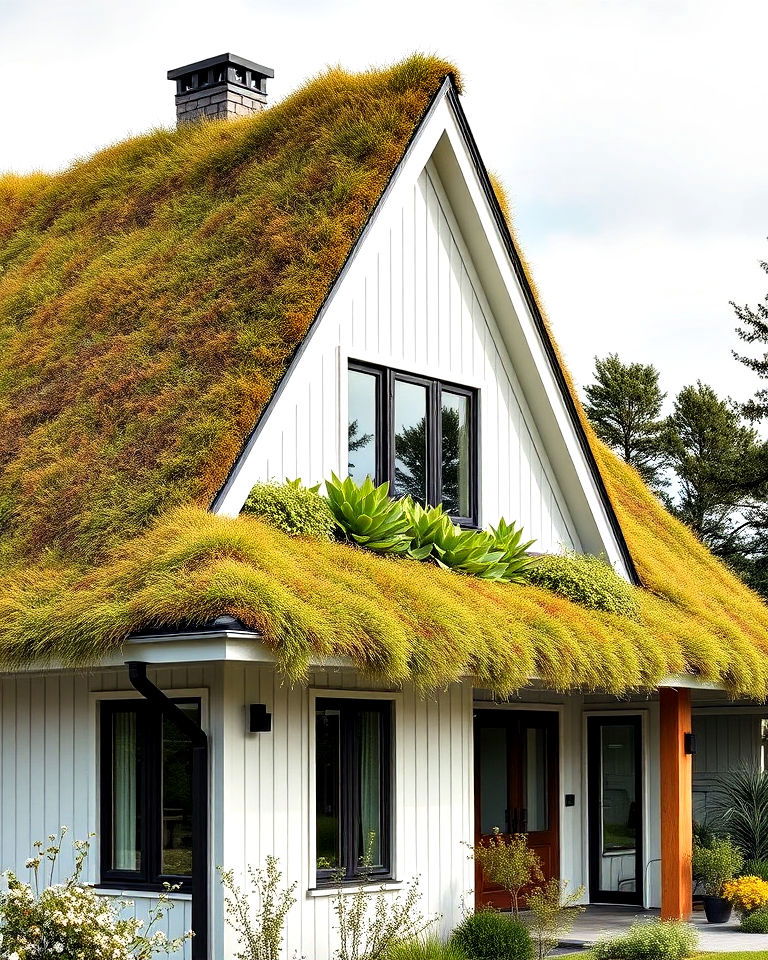
A Scandinavian-inspired gable roof topped with green roofing combines functionality with eco-friendly innovation. This design supports vegetation on its surface, improving insulation and reducing energy costs. The steep gable slopes ensure proper drainage while showcasing a minimalist Nordic aesthetic. This approach not only enhances sustainability but also blends seamlessly into natural surroundings, making it an ideal choice for homes in rural or environmentally conscious communities.
13. Gable Roof with Clerestory Windows

Integrating clerestory windows into a gable roof floods interiors with natural light while maintaining privacy. Positioned near the roofline, these windows maximize sunlight without compromising wall space. This design works particularly well in homes with high ceilings or open floor plans, creating a bright and spacious atmosphere. Clerestory windows also add a modern edge to traditional gable roofs, making them a versatile option for various architectural styles.
14. Gambrel-Gable Combination
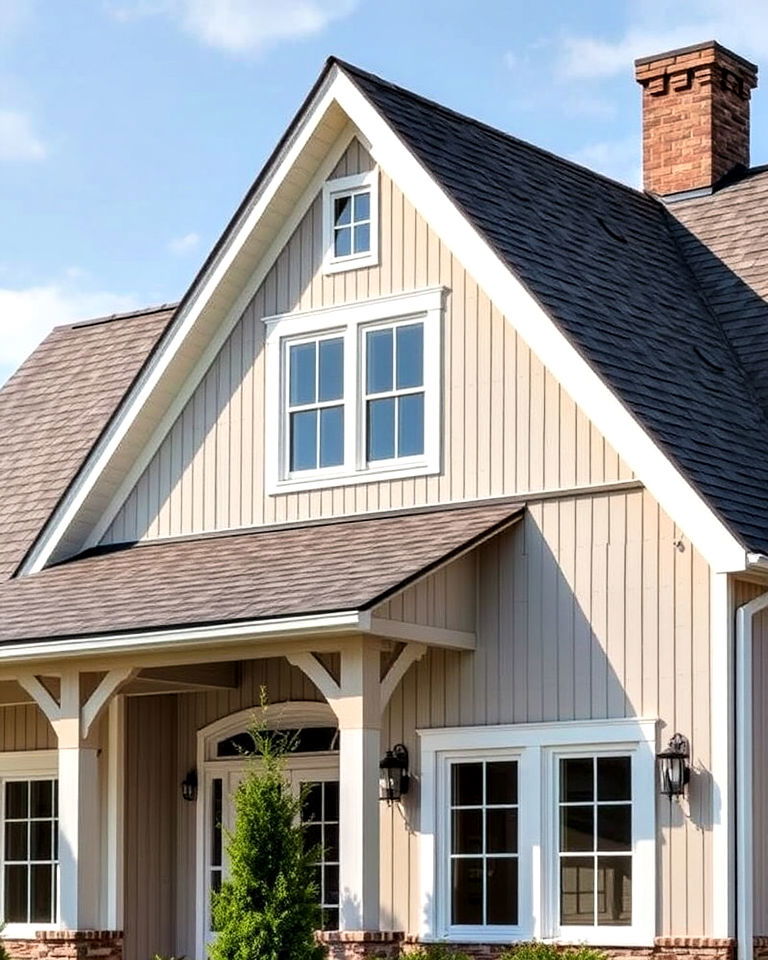
Blending gambrel and gable roofs results in a functional and visually appealing hybrid design. The steep lower slopes of the gambrel provide additional space for upper floors or storage, while the gable peak maintains a classic silhouette. This style is popular in barns and country homes but adapts beautifully to modern designs with contemporary materials. Adding windows or dormers further enhances its usability and aesthetic value, creating a charming and practical home feature.
15. Gable Roof with Extended Ridge
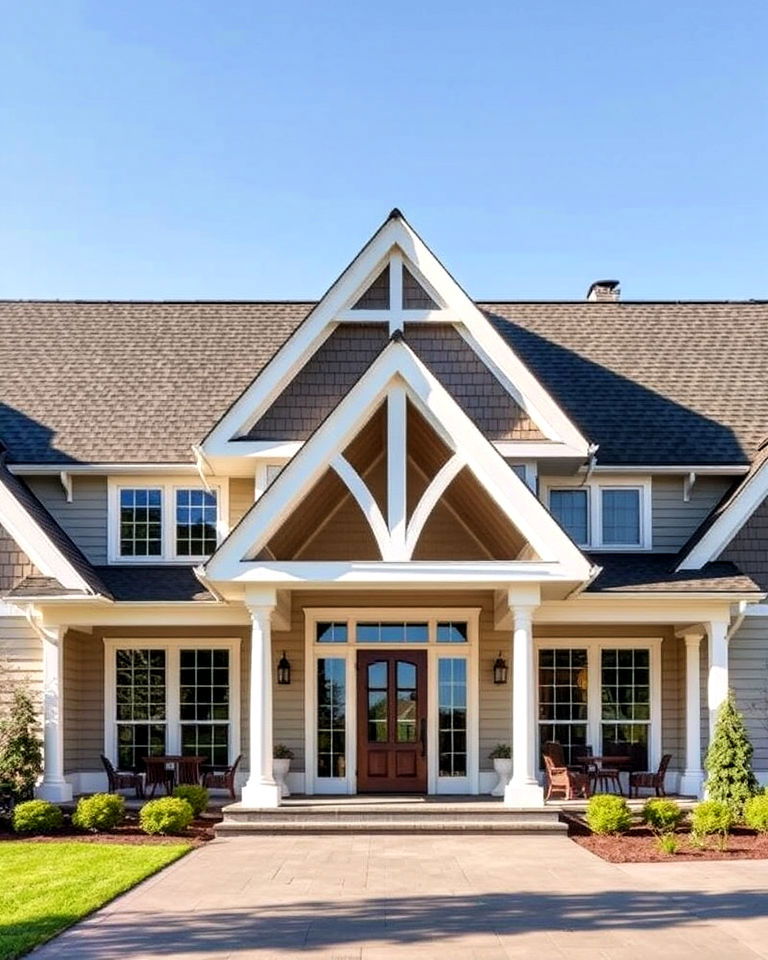
A gable roof with an extended ridge creates a dramatic and elongated appearance, adding elegance to traditional rooflines. This design works particularly well for larger homes, emphasizing horizontal space while maintaining the classic triangular profile. Extended ridges can also accommodate features like covered porches or outdoor seating areas beneath the overhang. By pairing this design with cohesive siding and roof materials, it delivers a cohesive and sophisticated exterior.
16. Gable Roof with Decorative Trusses
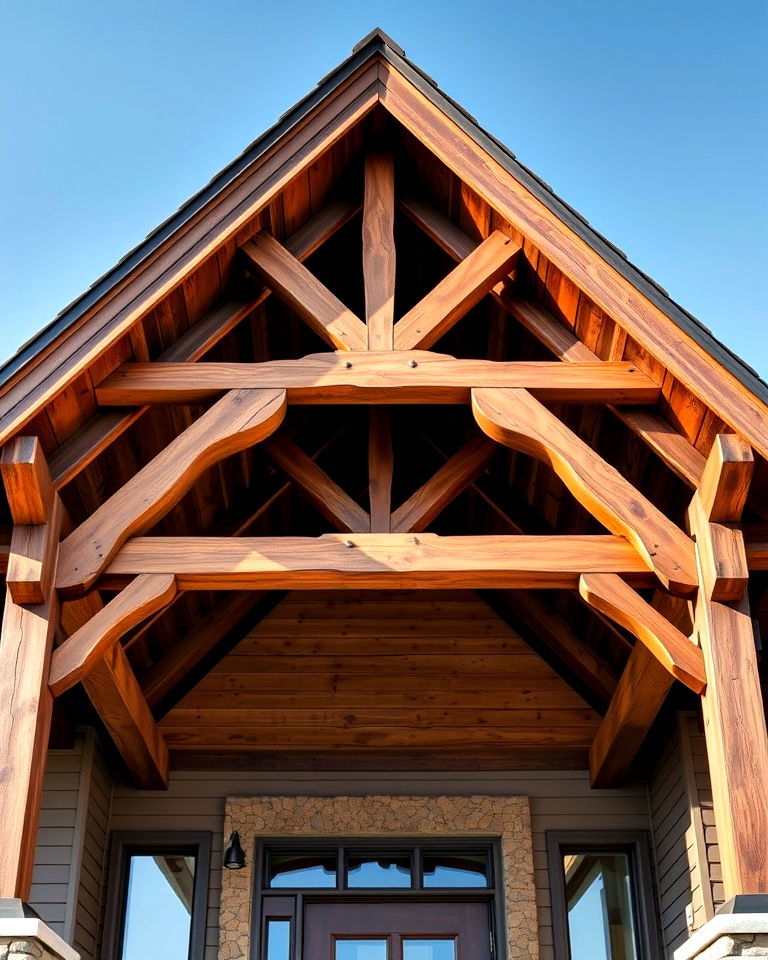
Exposed decorative trusses under a gable roof add a rustic and handcrafted touch to the home’s design. These trusses can be customized with intricate carvings or simple geometric shapes, depending on the architectural style. Ideal for cabins, farmhouses, or even modern homes, they enhance both interior and exterior aesthetics. Incorporating wood, steel, or composite materials for the trusses provides flexibility in design while ensuring durability and charm.
17. Butterfly-Gable Roof Fusion
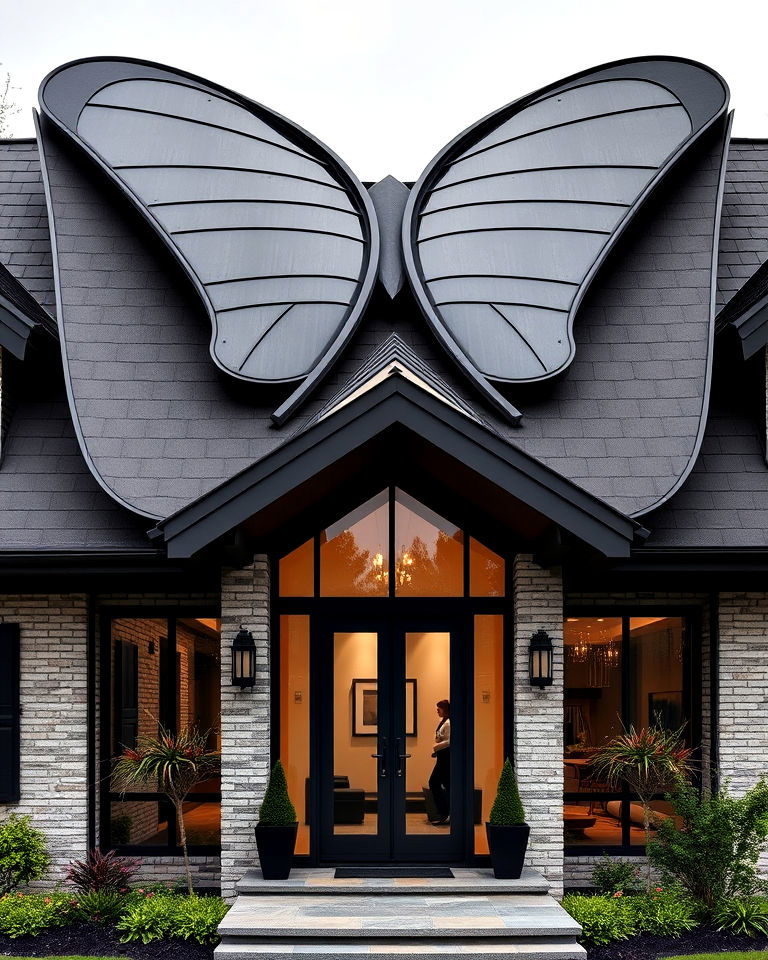
A butterfly-gable roof merges the inverted shape of a butterfly roof with traditional gable lines, creating a unique and eye-catching form. This design combines functionality with modern artistry, ideal for contemporary or avant-garde homes. The inverted slopes direct rainwater to central drains, making it eco-friendly and suitable for rainwater harvesting. Highlighting this design with bold materials or colors enhances its architectural impact, turning the roof into a focal point.
18. Gable Roof with Skylights
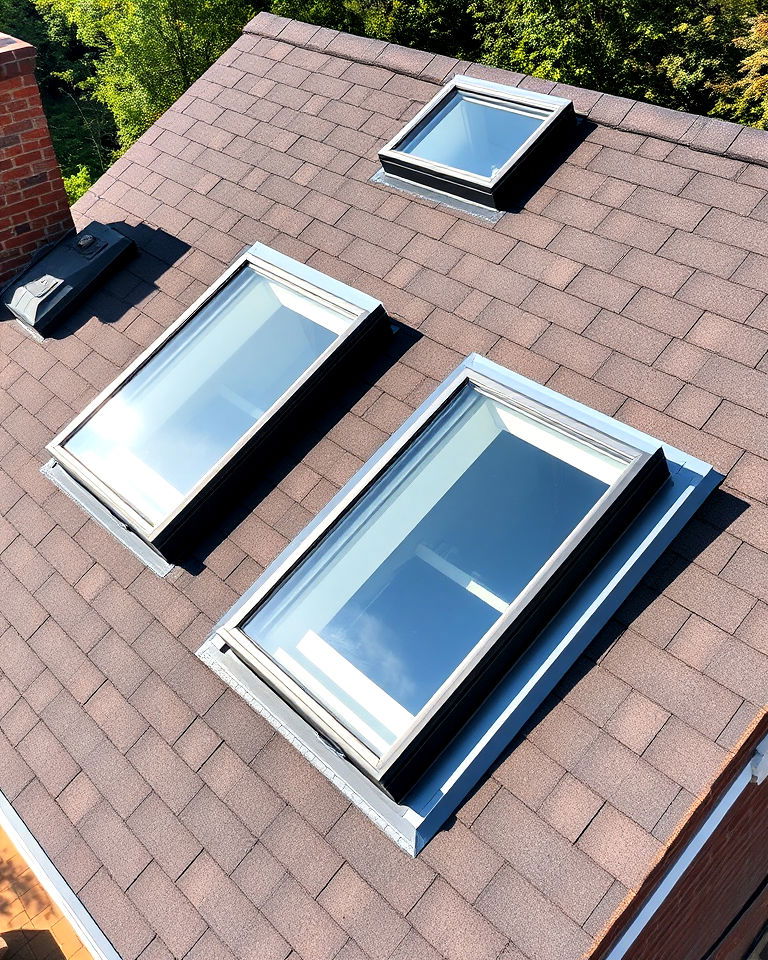
Installing skylights on a gable roof brings in natural light while adding a modern and luxurious touch. Skylights are perfect for illuminating attics, lofts, or open-plan living spaces, making them feel larger and more inviting. Their placement on the sloped roof ensures effective water drainage and maintains the roof’s functionality. Choose energy-efficient glass for added insulation and reduced glare, optimizing the roof’s practicality and style.
19. Split-Level Gable Roof
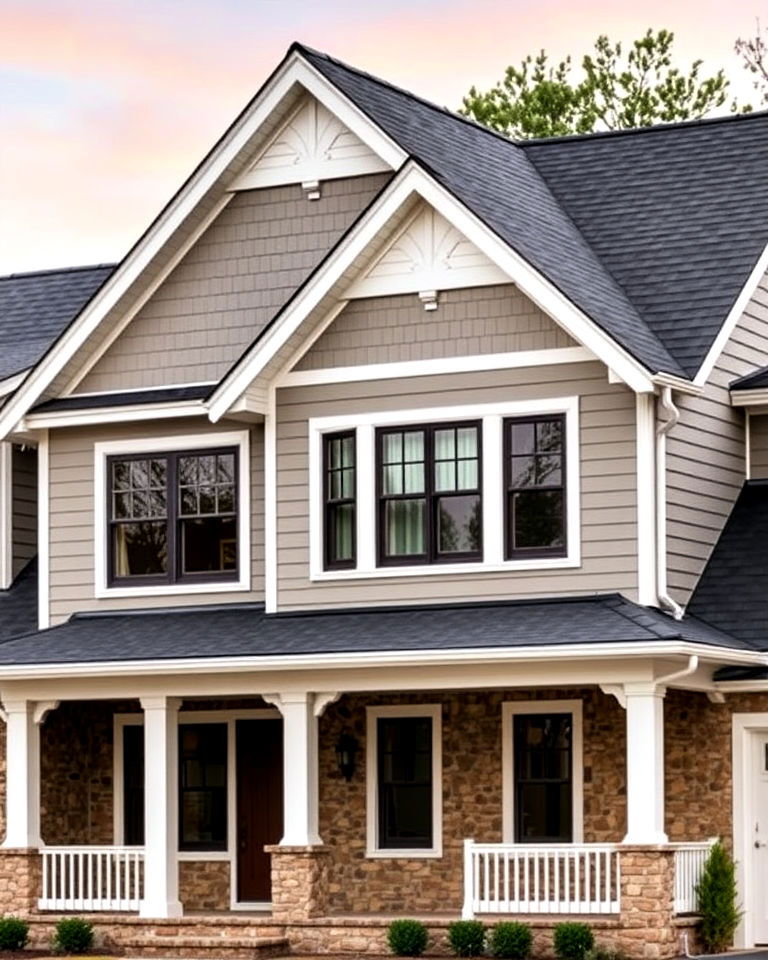
A split-level gable roof offers a dynamic and multi-dimensional look, making it ideal for homes with varying floor heights. This design creates distinct roof sections at different levels, adding depth and visual interest. It’s particularly useful for sloped properties, where the split-level roof can mirror the terrain. Pairing this design with complementary siding or stonework ties the overall aesthetic together, delivering a harmonious and unique home exterior.
20. Gable Roof with Accent Colors
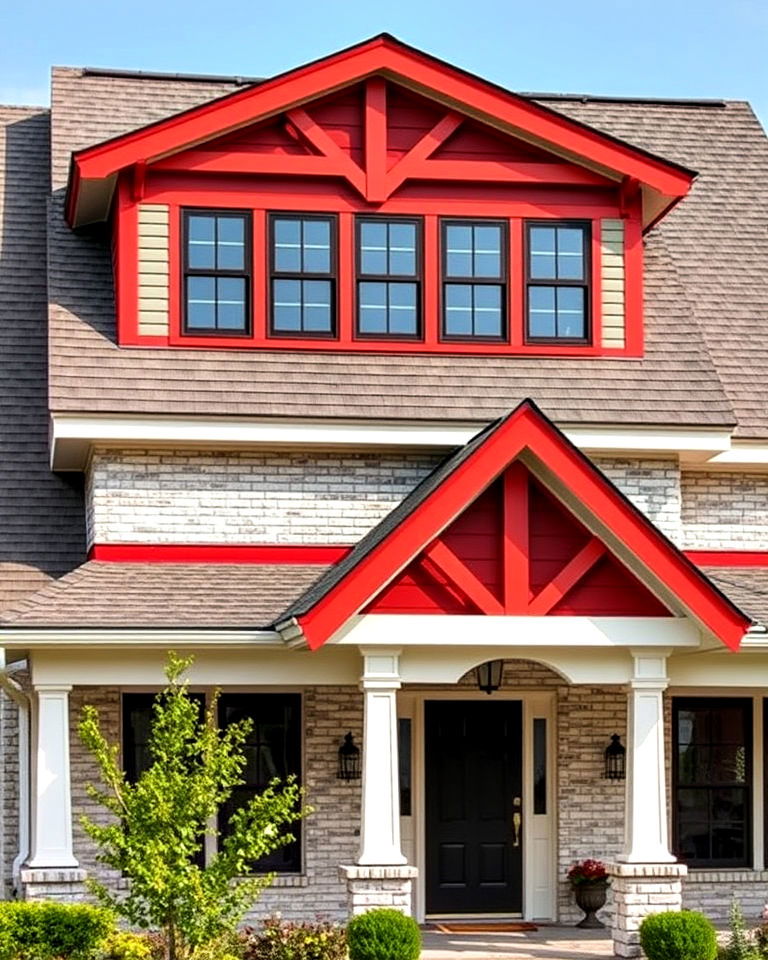
Incorporating accent colors into a gable roof design enhances its visual appeal and adds personality. Choose bold hues for shingles, trusses, or trims to create contrast or match the home’s overall palette for a cohesive look. Accent colors can highlight architectural features, such as dormers or overhangs, drawing attention to the roof’s design. This approach works well with both traditional and modern gables, offering endless possibilities for customization.
Conclusion
Gable roofs are more than just a practical roofing solution—they’re a canvas for architectural expression. Whether you prefer the classic charm of traditional symmetry or the bold innovation of modern designs like glass panels or butterfly-gable fusions, there’s a gable roof style to suit every taste and home. From enhancing natural light with skylights to adding depth with cross-gable designs, these ideas prove that gable roofs can be both functional and visually striking. As you explore these 20 gable roof design ideas, remember that the right choice can transform your home into a masterpiece of modern and classic design. Let your imagination guide you as you craft a roof that’s as unique as your home.

Leave a Reply